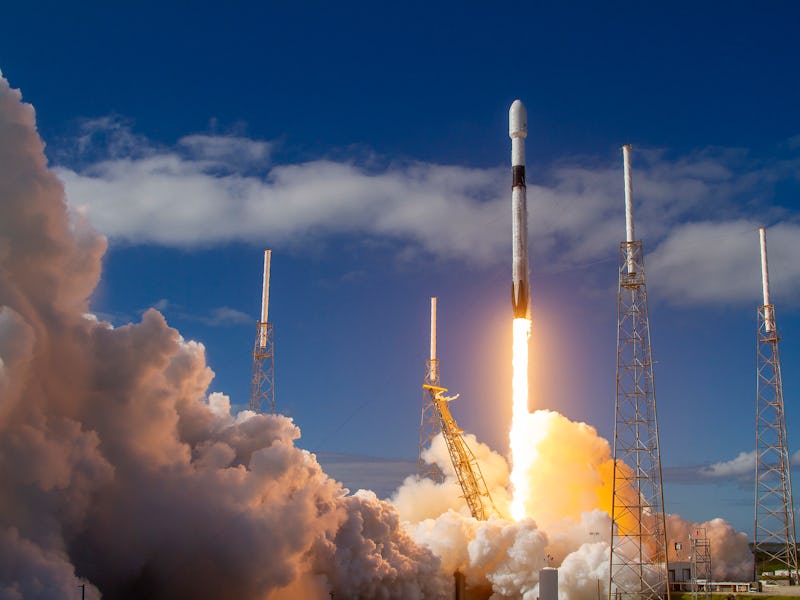SpaceX reached a momentous milestone in the race to reuse rockets
In November 2019, a SpaceX Falcon 9 launch marked three firsts for the company.

Back in November, SpaceX reached a momentous milestone in the race to reuse rockets.
The mission was SpaceX’s second set of 60 Starlink satellites, designed to offer super-fast internet connectivity almost anywhere in the world. But when SpaceX launched the mission aboard the Falcon 9 rocket from Space Launch Complex 40 at Cape Canaveral in Florida, it also marked three firsts for the company.
This is #7 on Inverse’s 20 wildest space discoveries of 2019
1: This is the first time SpaceX had flown the same Falcon 9 booster four times
In fact, the launch is believed to be the first time anyone has flown the same booster four times. The booster is said to comprise some $46.5 million of the total $62 million price tag associated with a Falcon 9 launch. That means reusing the same booster can bring the costs down of rocket flight and pave the way for more ambitious missions.
The B1048 booster flew on three prior missions:
- The first was on July 25, 2018 from Space Launch Complex 4 at the Vandenberg Air Force Base in California. This was for the Iridium-7 mission, one of the eight missions for completing one of the biggest tech upgrades in history.
- The second was October 8, 2018, for the SAOCOM 1A mission at the same launch complex.
- The third time was February 22, 2019, for the Nusantara Satu mission. Like the fourth mission, this one was also held at Cape Canaveral.
The rocket blazes a fierce trail as it leaves the base.
2. This was the first time SpaceX had successfully landed the same booster four times
The first landing, made in 2018 on the droneship Just Read the Instructions, were described by SpaceX principal integration engineer John Insprucker at the time as “the worst conditions we’ve ever had.”
The second was at Landing Zone 4 at the base, while the third and fourth landings took place on the ship Of Course I Still Love You.
3. This is the first time the protective fairing shield was re-used during take-off
The shield is designed to protect the payload during liftoff. Although the fairing only makes up around $6 million of that $62 million figure, its recovery marked a big milestone for dropping prices. The casing in question was previously used on the ArabSat-6A Falcon Heavy mission, which took off on April 11, 2019.
Beyond the three firsts for the company, SpaceX also broke ground by lifting up the heaviest payload ever. Each satellite weighed 573 pounds, meaning the total load was 30,027 pounds. That’s like taking a couple of school buses into space.
Starlink is aimed at taking a small percentage of the internet connectivity market. The hope is that the profits can be used to fund SpaceX’s more ambitious missions, like a city on Mars. With plans to send up to 42,000 satellites into space, having a reusable rocket system in place could help greatly with achieving these goals.
As 2019 draws to a close, Inverse is revisiting the year’s 20 wildest space stories. Some are awe-inspiring, some are bordering on science fiction, and some are just, well, wild. This is #7. Read the original article here.